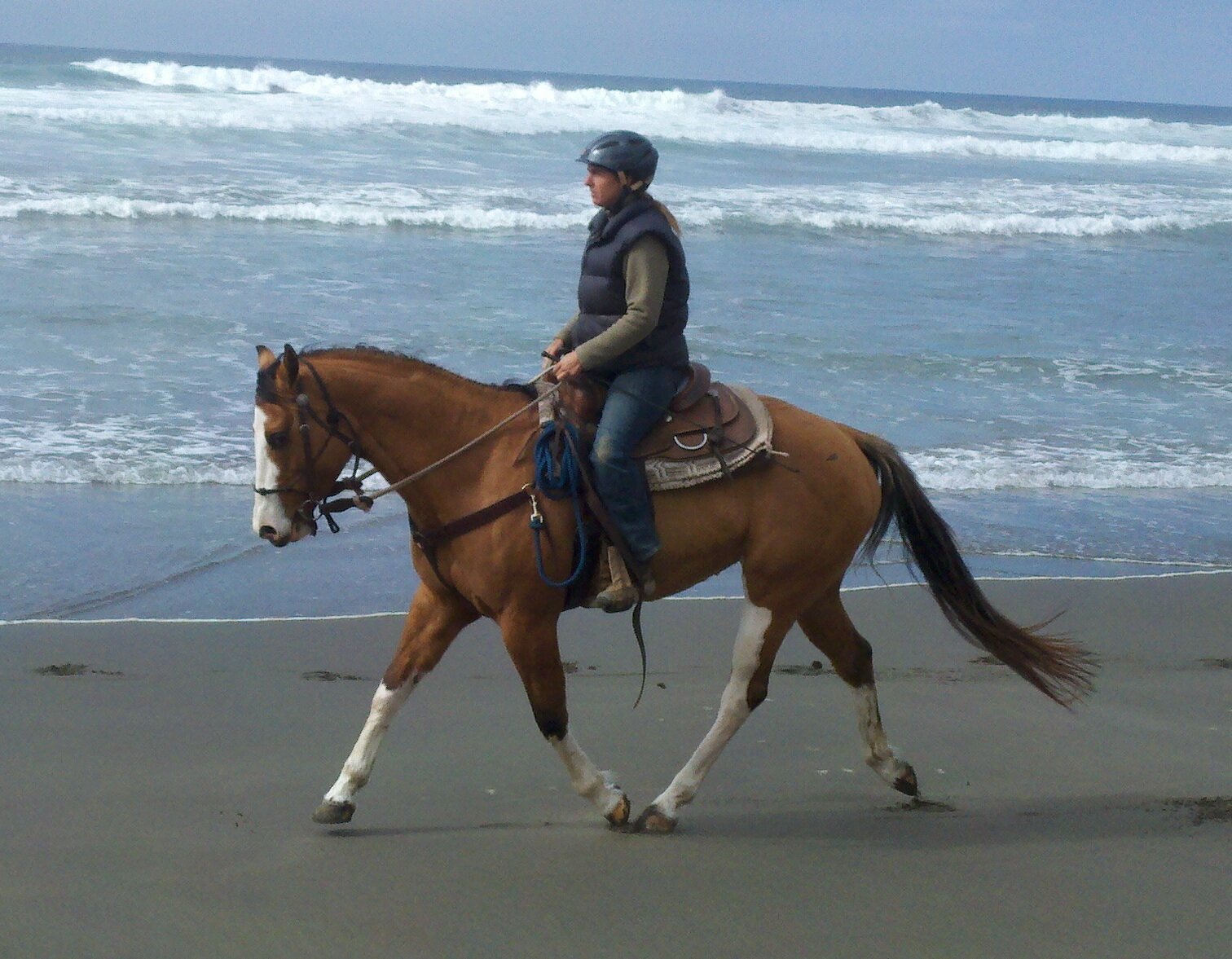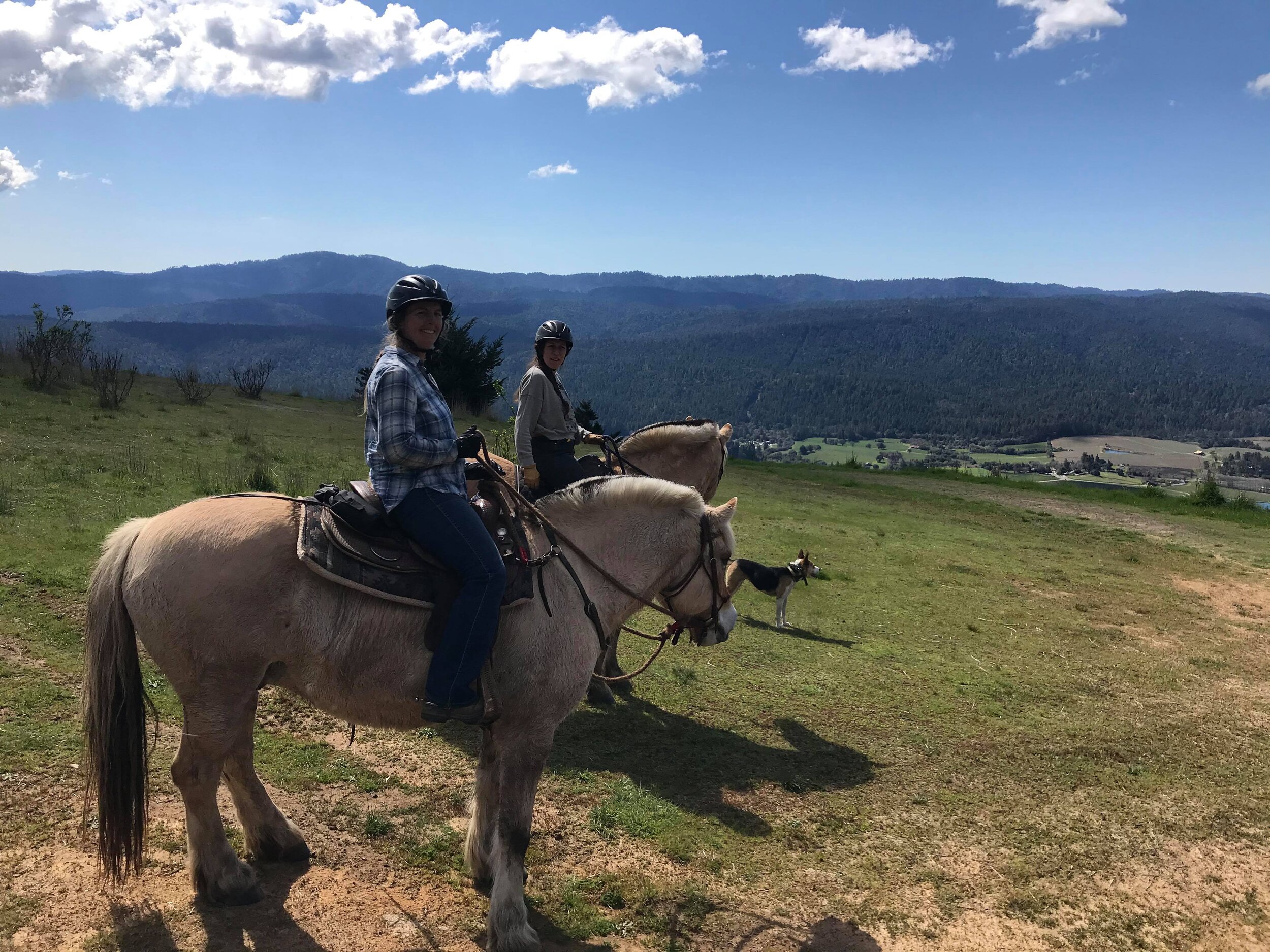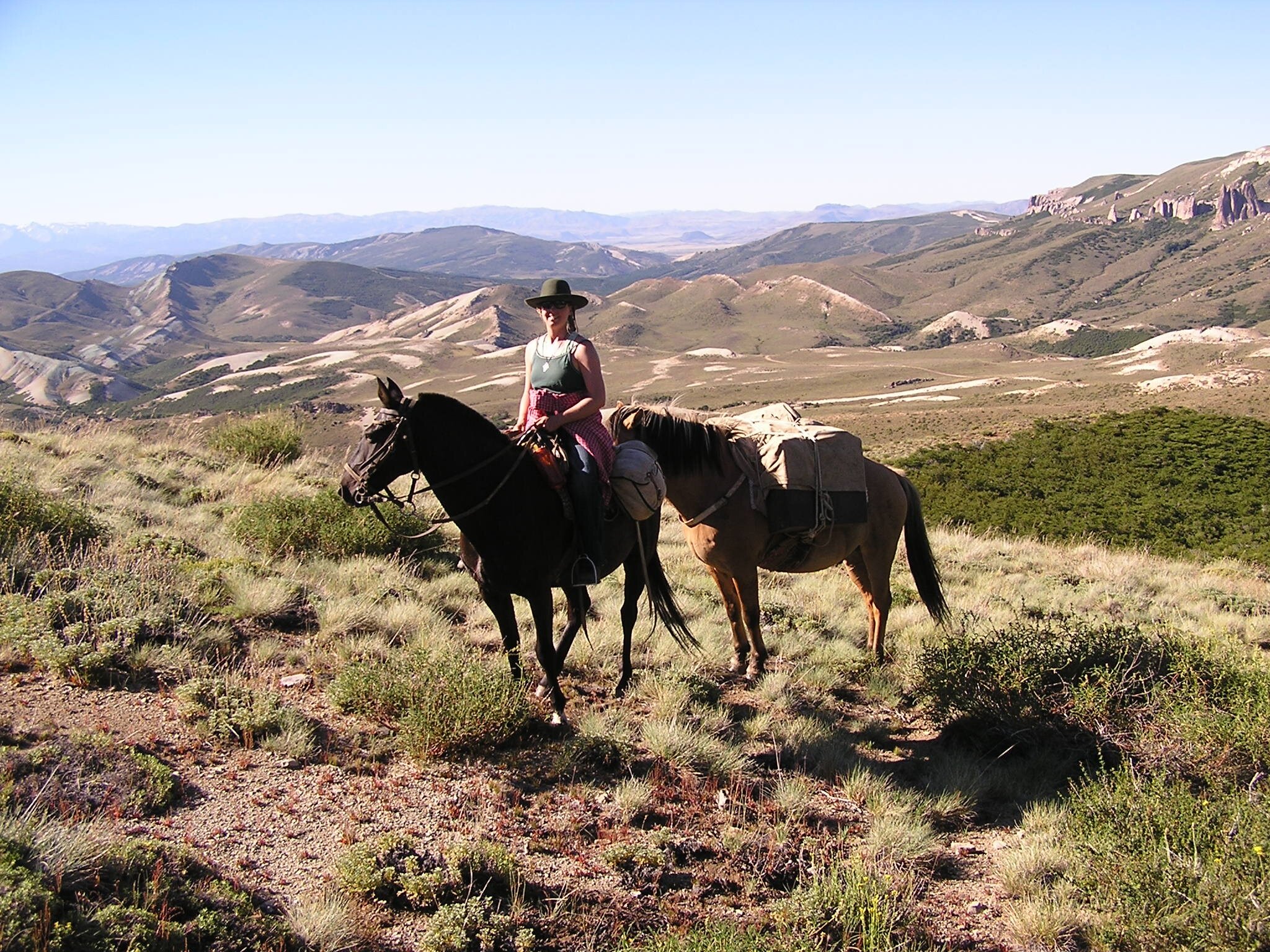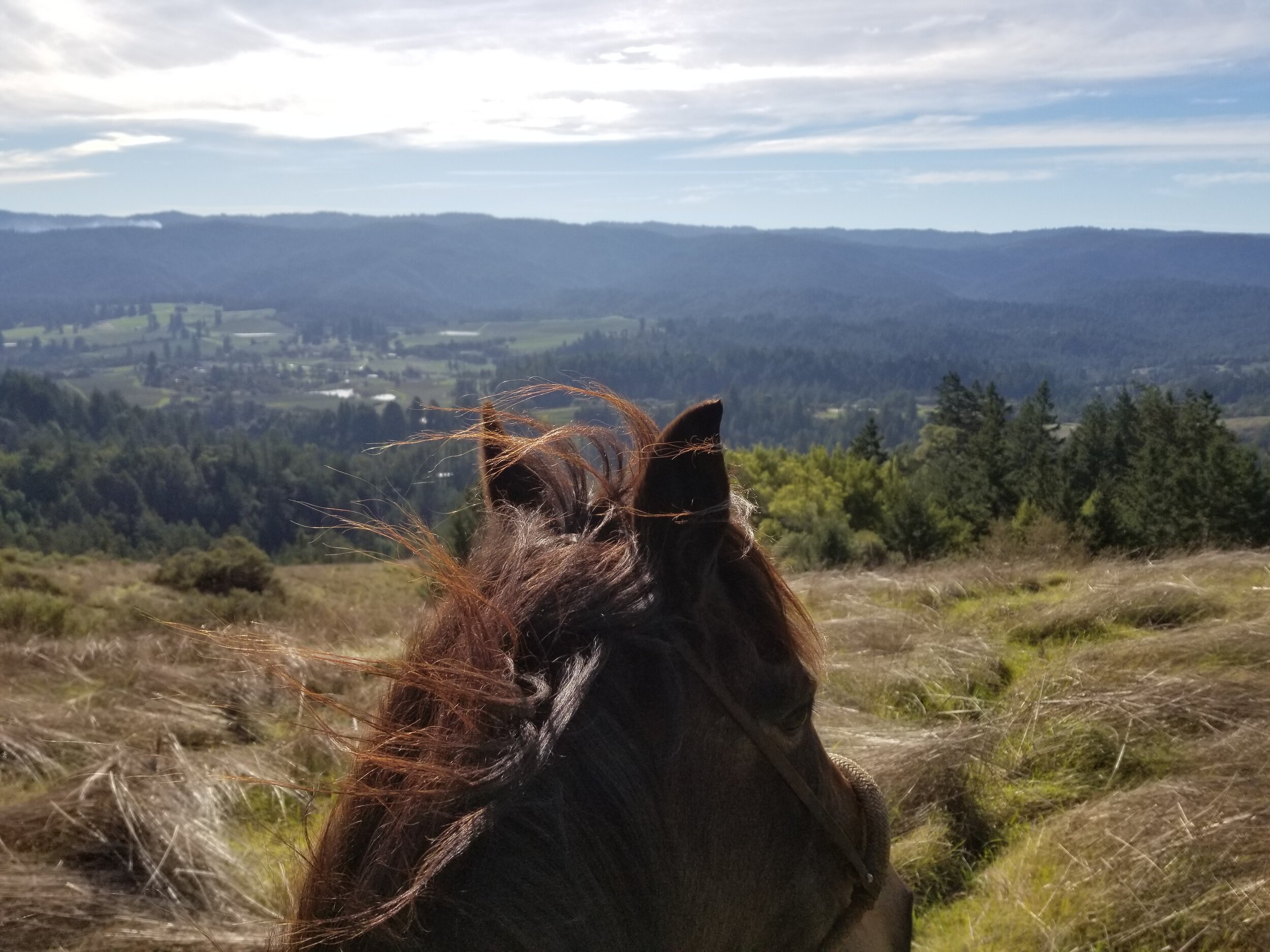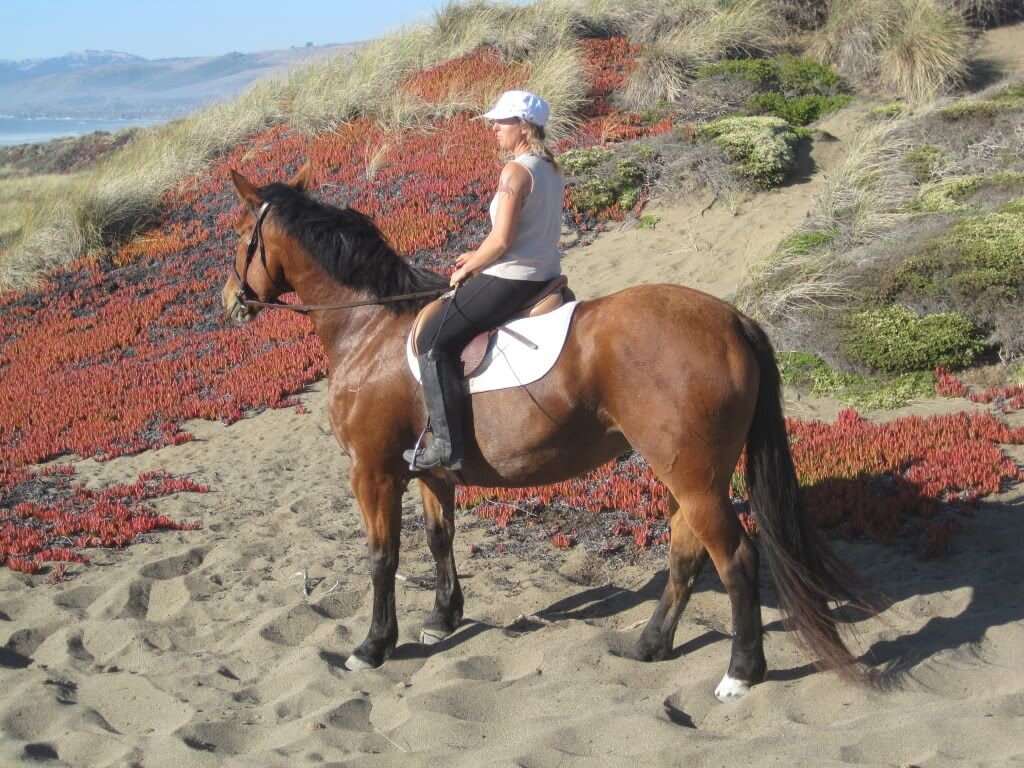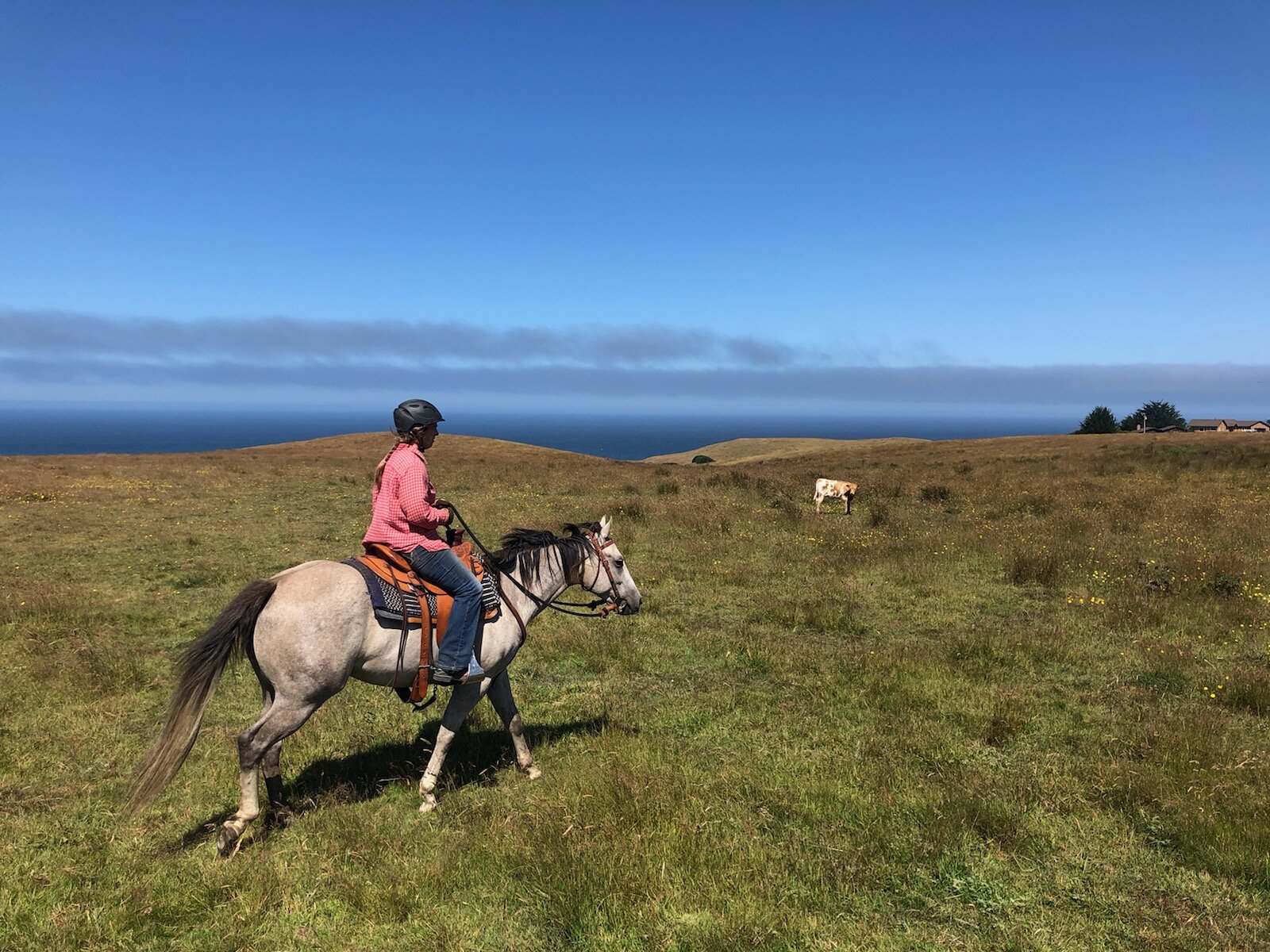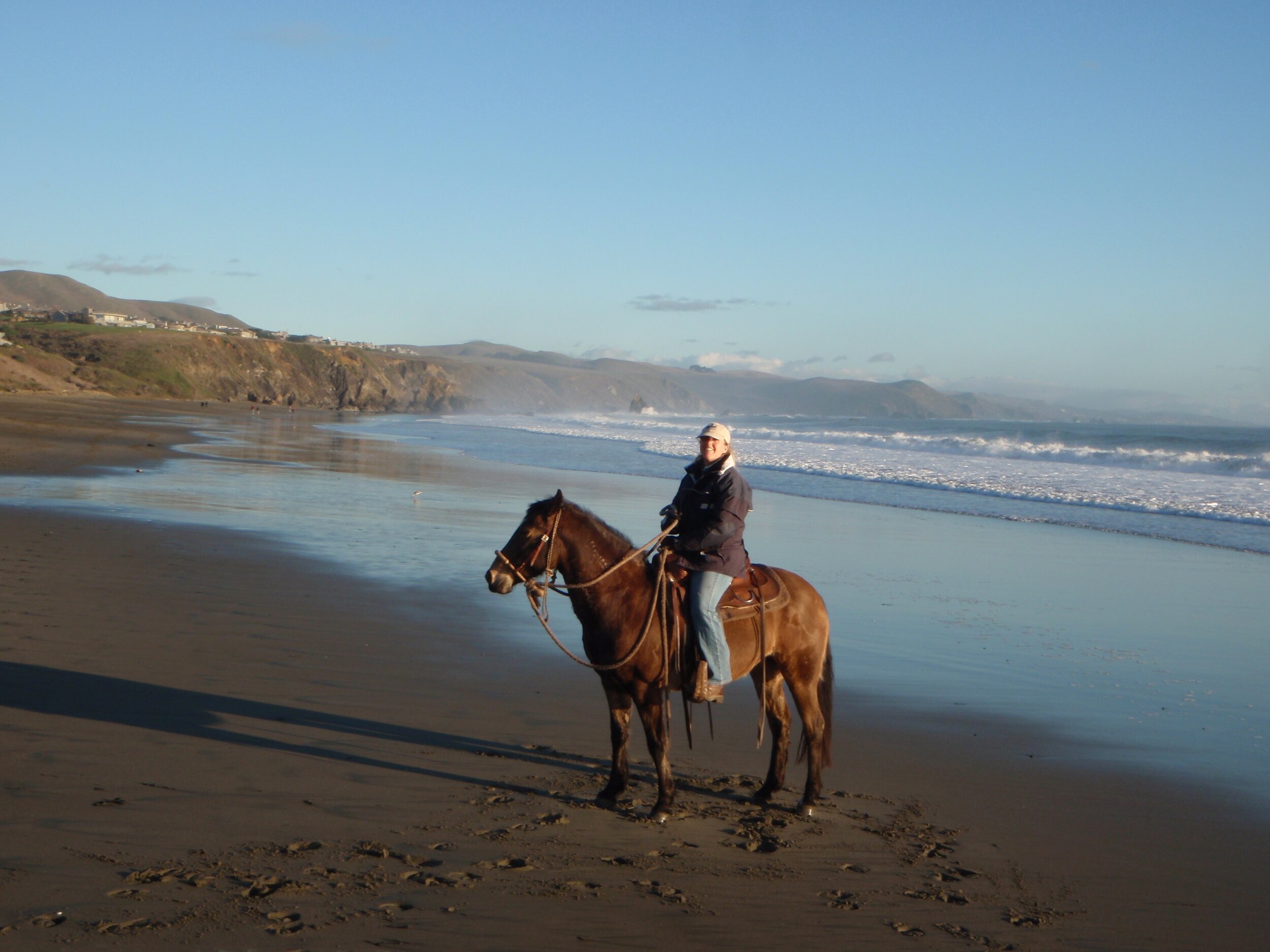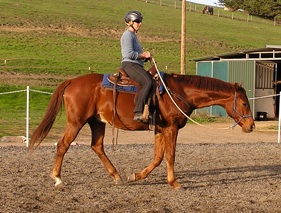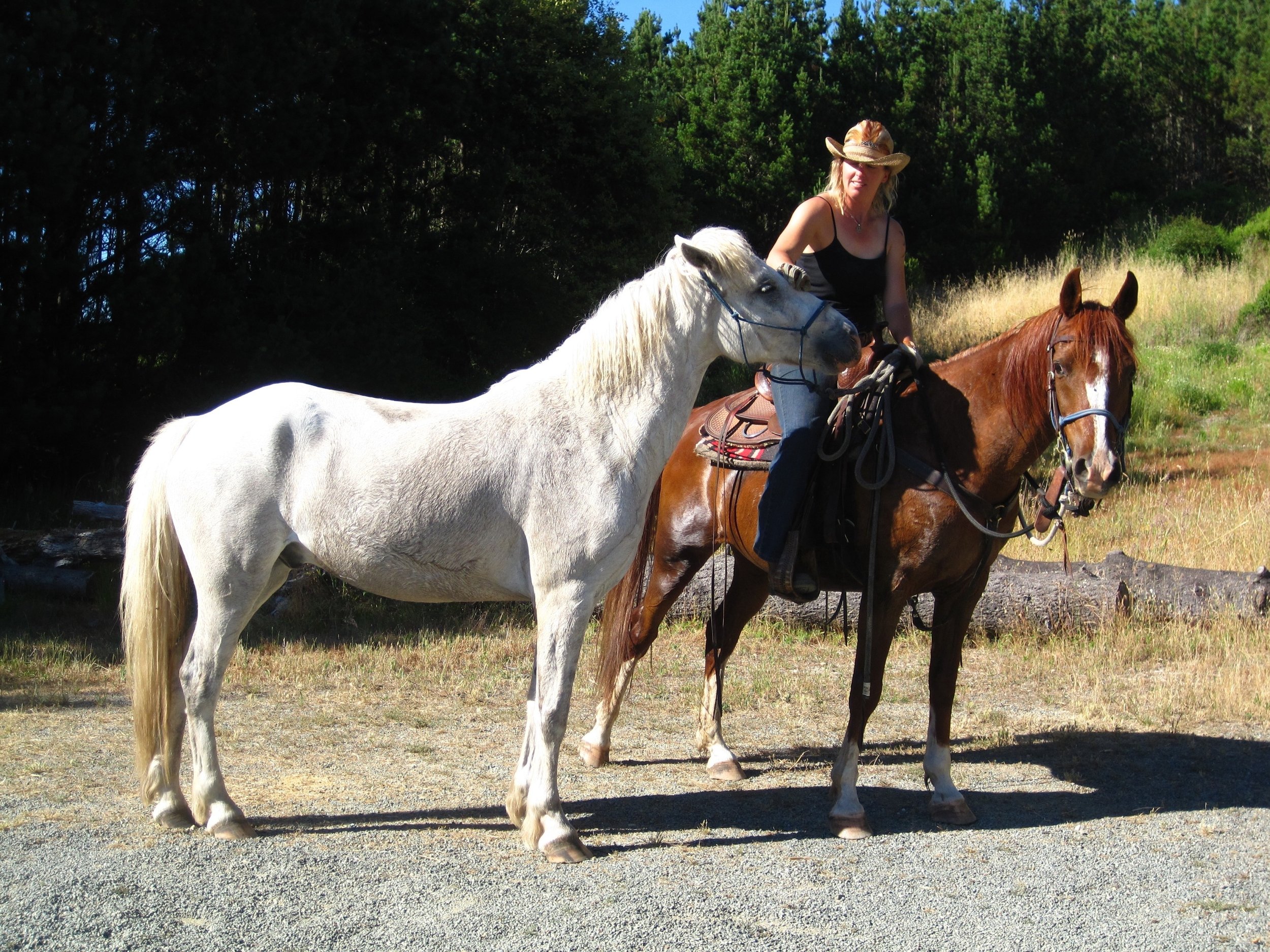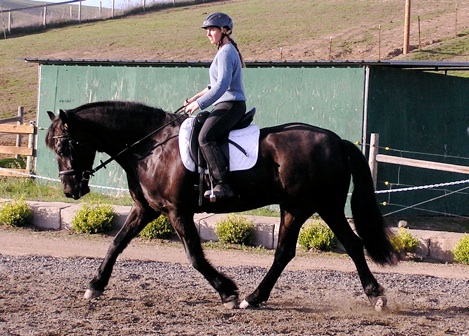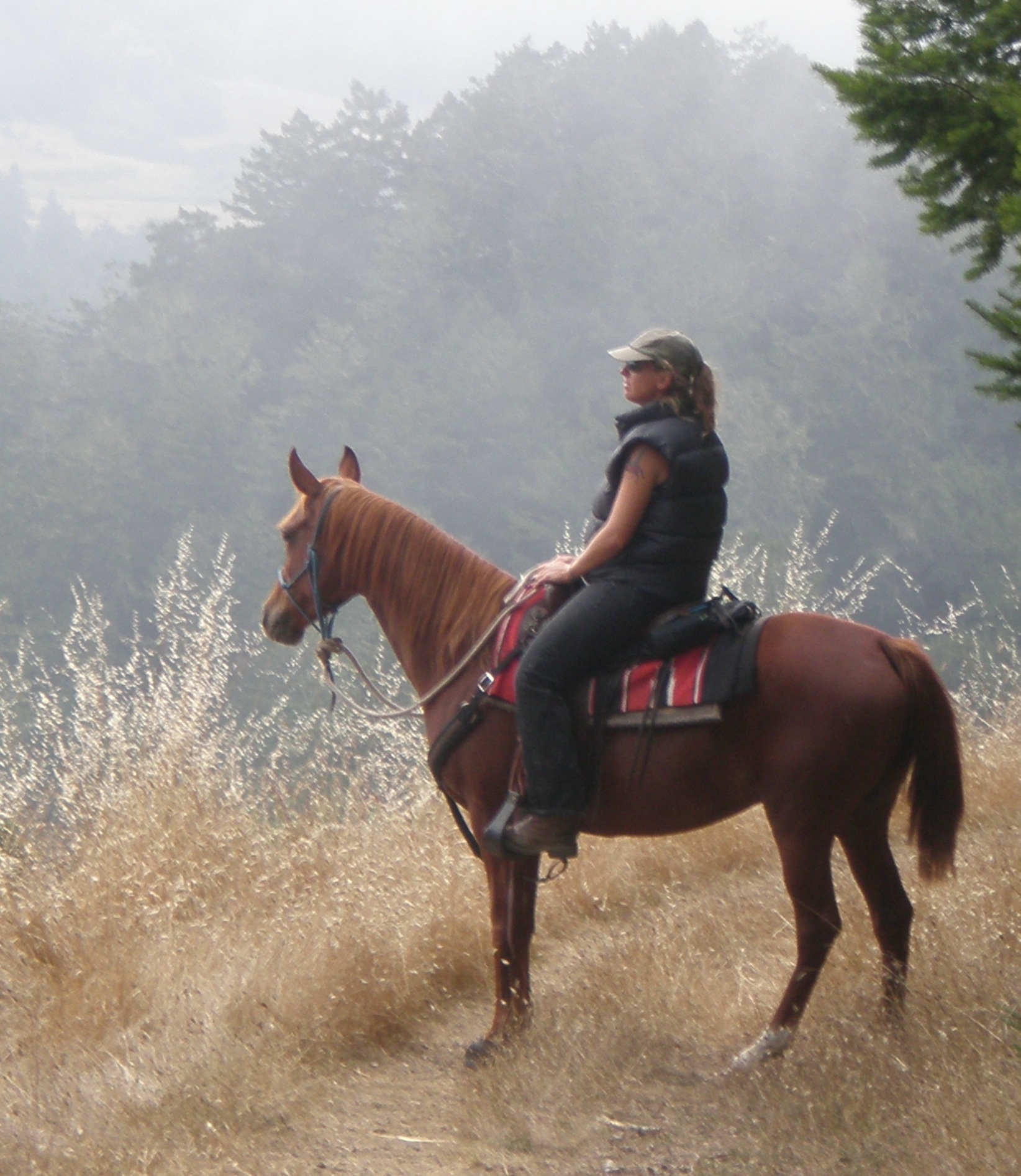Approach
In 2022, I started Horse ReCourse, a non-profit 501c3 based in Mendocino County, to help horses in need. Please follow this link to the website for details.
I have spent the majority of my career specializing in starting young horses under saddle. With a good, solid foundation, all future training will be easier, faster, and gentler. Without a good start, a horse goes through life with baggage that keeps them from being as happy, comfortable, and useful as possible. I have broadened my focus over the recent years, but I still employ many of the same basic principles with every horse I meet. I apply the information I have learned about Equine Learning Theory to help the horses understand what is expected of them. I find that as long as a horse comprehends what is being asked, and doesn’t have any reason to be afraid, they will do their best to perform as requested.
If a horse is started well, they are given the best chance at a long, fair, healthy life. Horses that enjoy their job are fun. Horses that are fun to be around get attention. Horses that are fun to ride get ridden. Horses that are useful, are valued, and receive better lifelong care. Horses that are easy to care for are more likely to have their needs met.
For example, a horse that stands quietly to have its feet trimmed will be more likely to receive regular hoof care, and in receiving quality care, the horse will continue to improve over time. Horses that are difficult to be around are more likely to be neglected. The vicious cycle of neglect, discomfort, reactivity, and finally, often, abuse, can often start with a lack of what we call training. Typically, this begins with a failure to communicate our expectations clearly.
"You just gotta show him who's boss." These infamous words from so many so-called trainers and others in the horse business have doomed many a horse to a life of kicking and pulling. No wonder so many horses can seem so unwilling. Until there is comprehension of a request, the horse cannot perform as expected. What we often interpret as belligerence, stubborn-ness, or malice is usually confusion and fear.
Like so much in life, horsemanship is based on clear communication. The best thing you can do for your horse is the help them be well behaved. Starting a horse correctly provides him or her with the advantage of clear understanding of what is expected. The well started horse is responsive to and respectful of their rider, and is safe to handle and ride, and ready for further refinement. This allows the rider to use correct and subtle aids, further supporting the horse in becoming a ‘good citizen’.
We communicate with our horses with combinations of cues from our seat, hands, legs, body language, and voice. It is our responsibility to ensure that each cue is clear and that our horses understand what they are being asked to do. It is with a profound respect for the nature of the horse that I say: one of the most important things to remember when we work with horses is that they are not people, and they think very differently than we do. We cannot mistake their behavior for our interpretations of human motivations. Many people assume that their horse “knows he’s been bad” or is “just being stubborn”,when in fact, the horse is confused, or frightened, and doing what seems necessary to feel safe. As one of my mentors once told me: “If they can do it, they will do it.” I keep this in mind when I find myself frustrated with a horse’s behavior. It is my job to help the horse understand how they can perform properly.
It is the responsibility of the rider or handler to earn the horse’s trust by helping the horse feel comfortable and safe. We must clearly explain to the horse what needs to be done, and to consider why he or she might be unable to do it. The human may need to re-examine their presentation and adjust to fit the horse to be successful. This can mean using a new approach, different equipment, or addressing physical issues in order to fix the problem. If a horse fails to perform as a result of confusion or a physical inability, punishment will not cause them to correct themselves, and it can compromise their trust in people, and their desire to try.
My training methods are based upon the principles of behavior science, including positive and negative reinforcement. I want the horse to choose to do what I would like them to do. People have been breeding horses for centuries in an effort to create a tractable, willing animal. Usually we can use the horse’s natural tendencies to help shape them into a useful animal that will be valued, and this is ultimately what will most benefit the horse.
Horses amaze me not only with their athletic capabilities, but in their sensitivity and willingness to do our bidding. When I start a young horse, or meet a horse that has “issues”, the first step that must be taken is to gain the animal’s trust. I want the horse to have confidence in me, to feel sure and safe with me. This is what I mean when I say 'trust', this sense of security. I want the horses to 'look me up' when they are needing support. I certainly don't want them thinking that they need to look for safety somewhere else.
To earn a horse’s trust, I will practice good relationship skills, being clear and predictable, so that a horse can understand me. I intend to earn the respectful relationship I have with the horse by clearly demonstrating that I am fair, I am kind, I am confident, and I will not put the horse in a compromising situation. I use clear, repetitive, consistent cues to ask the horse for the simple, basic movements that further refinement will depend upon; stop, go, turn, and yield. If a horse has confidence in my ability to keep them safe, than they are willing to try to do anything I ask, provided that they understand me. It is my responsibility to be sure that I am understood, and ultimately, to help you be understood by the horse.
Some individuals require more of my time and effort than others before learning can progress, but it is imperative that a student be allowed the time needed to trust their instructor before asking more of them, be they horse or human. With humans, my hope is that we understand and trust one another, and I will respect my student’s requests to curtail my expectations of them so that they can feel safe, and open to learning. We are all familiar with the challenge of learning something when we are anxious. We must develop a relaxed, curious, optimistic state of mind for optimal learning, and the same can be said for the horse.
I want to help the horse find a positive state of mind, as well. In their natural state, the horse prefers to be relaxed and unafraid, but as prey animals, their instincts help them survive by being alert so they can react to perceived threats. Much of what we ask of our horses will trigger their inherent flight instincts, which tend not to be very helpful to a person. Since their natural instincts cause them to panic and flee when they are frightened, we don't want to challenge them to the point that they are stressed, if we can help it. I want the horse to feel safe, unafraid, and engaged in their work. We want to develop their natural curiosity and keep them encouraged so that they can learn easily.
Because of the social make up of their herd, horses crave quality relationships. It is our responsibility, as their caretakers, to learn how to express confidence and reliability in a way that makes sense to the horse. Learning how to be kind, firm, fair, and trustworthy require an understanding of the body language that horses use, 'feel', and a sense of timing. If you want a deeper understanding of them, nothing will replace time spent with horses.
Learning to see horses as they truly are can help us interpret their behavior and respond to them in a kind and fair manner. Often what looks like belligerence is really fear, or pain. Horses are incredibly expressive and easy to relate to, which is why they have become so useful in therapeutic settings. It can be immensely rewarding to spend time with horses in which we are asking nothing of them.
Horses are very emotional animals, and they rely very heavily on their family. The generally accepted, overly simplistic view of herd dynamics can be somewhat limiting when relied upon to explain a horse’s psychology. It's true that in a natural herd setting, there is a lead stallion, the one that protects “his” herd from an imposing rival stallion. But the herd is a complex social organization, and there are other important relationships between the individual horses. There is also a lead mare, which the others trust to keep them safe and lead them from potential dangers, and into safe places. Within the herd, there are complex hierarchies between individuals that can be difficult to understand without spending a lot of time with the animals.
Leadership is not the same thing as dominance at all. Think of relationships you’ve had with leaders that you respect. Horses are aware of their surroundings, and alert their herd to anything unusual. They need a member of their family to assume leadership for them to feel safe, or their natural instincts will cause them to be 'on guard', and more alert and reactive to their surroundings. A horse that does not feel secure abdicating these responsibilities to their handler is not going to be safe for the average person to work with, because their naturally reactive behavior will be difficult to control. We need for our horses to feel safe with us so that they can relax their instinctive survival behaviors, and be receptive to listening and learning. As they relax, their posture will also change, allowing them to perform as we need them to in order to have long, healthy, useful lives.
Often, when a horse seems reluctant or combative, it is unable to do what is asked because of miscommunication, or because of pain or another physical limitation. Since they aren't really verbal, horses have different means of communication than most people are used to, and it's up to us to find other methods, like body language, and to listen to what the horse is trying to 'say' without words. The first step in communication is listening to what we’re being told. Once we understand what is required of us, we are more effective teachers. People can exert the most influence on horses by learning about the intricacies of horse language and behavior and using this knowledge to our benefit.
It is much easier for a human to learn to speak horse than for a horse to learn English. We have to use what we know about horses and how they communicate to help explain ourselves, so we can begin to ask them to respond to our invented language. It is up to us to translate our requests in such a way that our horses can understand them. It’s also our responsibility to get qualified help from trainers, veterinarians and other experts in assessing our horses’ limitations.
This is not to say that in order to ride a horse we must be perfect riders. Most horses are amazingly generous and forgiving of our mistakes, and the only way to learn to ride is to do it. It is important to remember that some individuals are more effective teachers, be they horse or human, and to find encouraging relationships that foster success.
I have found that the many skilled practitioners of equine massage, chiropractic, acupuncture, and other bodywork can, along with addressing physical problems, help establish trust in a horse. There is nothing to promote trust so much as making someone feel good! Attending to a horse’s physical needs is a wonderful way to improve your relationship. As another mentor of mine has said, “Horses enjoy us because we have fingers.” Many of the clinicians I have learned from have shown me myriad ways to touch my horses. Taking time to develop a relationship with your horse through touch will always be beneficial, and the relationships you establish will be superior to those based on bribery with food.
It often seems that riders are unaware of their horses potential and requirements. A quality equine professional can help assess whether a horse and rider are an appropriate match, and to suggest realistic goals for both to achieve. Part of my job is to recognize my own strengths and weaknesses, as well as my clients’ ambitions, and to be able to refer them on as necessary. Some young horses exhibit competitive potential after their first few months of training. I can help place young horses with accomplished trainers that will showcase their talents, as well as recommend bodyworkers who can heal a horse so that he will benefit from further training. There are so many variables in horsemanship, and horses are such wonderfully capable athletes, that I would not want to impose limits on anyone. With all that I have to offer, there is much to learn from so many others as well.
Different riders have different goals, so it is important that the motivation for the horse and rider be understood. It is a rider’s responsibility to ensure that we are matched with a suitable horse, and to seek out an education that works for us. Asking a horse to do something that he is physically, mentally, or emotionally unprepared to do is unfair.
We must understand the principles of responsible animal stewardship in order to be considerate of our horses’ welfare. Assuming ownership of another being is an endeavor that will have a profound affect on anyone with empathy. Horse ownership can be challenging on many levels, and it is important that we keep in mind that our safety is paramount. We are of no use to our horses or anyone else if we become injured. I have many years’ experience placing horses in appropriate homes, and I welcome clients with horses they are struggling with. We will do what we can to help you overcome your differences, and, if necessary, we will find a better match for both you and your horse.
I can confidently say that the horses I develop are consistently appreciated by novice and professional horsemen for being level-headed, responsive, balanced, compliant, and happy to go to work. I can also help you learn to keep them that way.
Thanks for reading all these words. I look forward to sharing my enthusiasm and experience with you!
